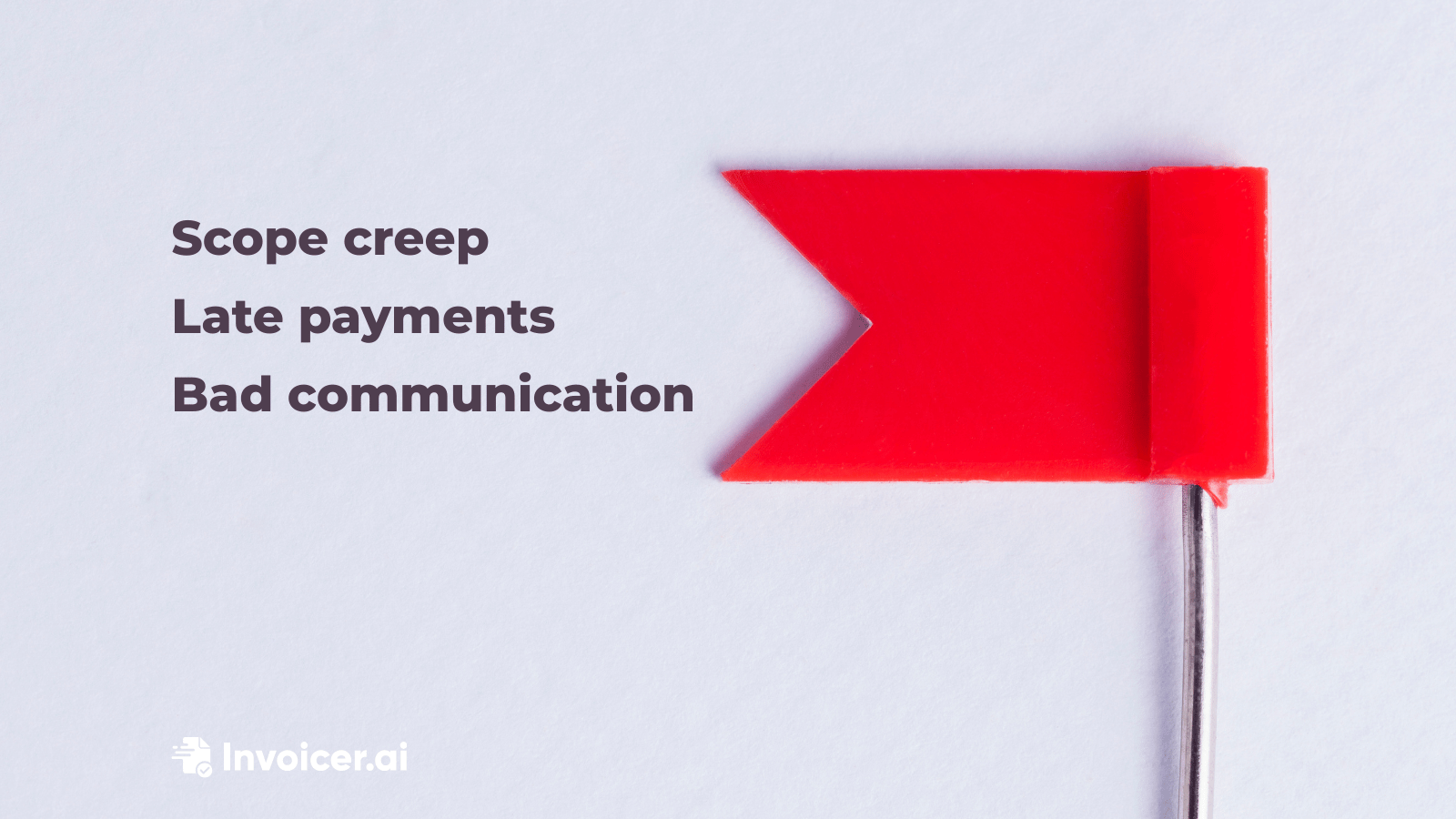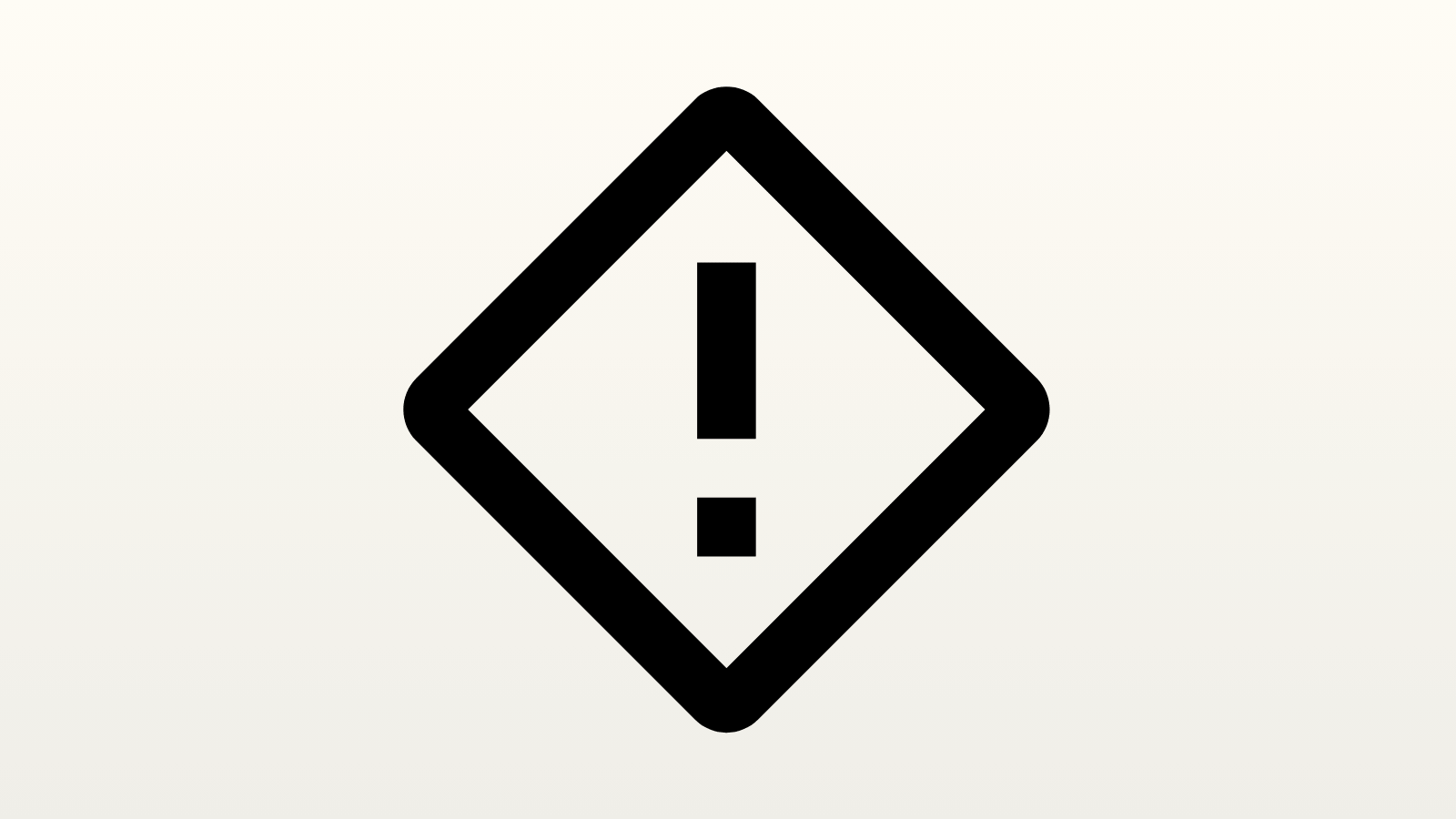
Not every bad client announces themselves right away. Some start out friendly, talkative, and seemingly trustworthy, only to reveal their true colors weeks or months into working together.
These late-emerging client red flags can obstruct projects, delay payments, and drain your energy. If you can learn to spot them early, you'll save yourself stress, money, and time.

When you first meet a client, you're both on your best behavior. They're excited to get the project started, and you're focused on delivering great work.
However, some warning signs only surface once the contract is signed and the work is underway.
Identifying these warning signs of bad clients before they escalate helps you:

Clear communication often fades after the contract is signed. Emails get shorter, feedback gets less specific, and you start guessing what they actually want. This lack of direction can lead to many revisions and missed deadlines.
What to do: Request specific feedback, recap every discussion in writing, and set structured communication channels.

Some difficult clients pay the first invoice on time but start slipping on future payments. At first, it's just a few days late. Then, it becomes weeks.
By the time you notice the pattern, you're already financially exposed.
What to do: Establish clear payment terms from day one, and pause work if invoices remain unpaid.

Scope creep rarely appears all at once. It's usually disguised as "quick tweaks" or "tiny changes" that weren't in the original agreement. Eventually, these small asks add up to a lot of extra unpaid work.
What to do: Have a formal change request process and quote for every additional task.
Some clients can't commit to decisions, dragging out timelines while they "think it over" or "get more opinions." This indecision causes expensive delays and forces you to rearrange your schedule for their convenience.
What to do: Set decision deadlines and make it clear that missed approvals will delay delivery dates.

If a client starts emailing, texting, messaging on social media, and calling without a plan, confusion is inevitable. Details get lost, instructions contradict each other, and you waste time sorting it all out.
What to do: Choose one official channel for project communication and stick to it.
Some problem clients get vague or evasive when you bring up the budget. Without precise numbers, you risk working beyond their comfort zone and facing disputes when the bill arrives.
What to do: Get budget confirmation in writing before starting any work.
If a client always blames others for problems, like the supplier, the weather, or even you, it's a sign they won't take accountability. This mindset makes resolving issues much harder.
What to do: Keep all agreements and changes documented so you can refer back to them.
A little comparison can be helpful, but constant references to how "the last person" was cheaper or faster undermine your expertise. It's a sign they may never be satisfied with your work.
What to do: Politely redirect these conversations back to your unique value and agreed project scope.

When clients skip approval steps, delay payments, or submit feedback in random formats, your workflow suffers. Ignoring agreed processes creates chaos and increases the risk of mistakes.
What to do: Remind them of the process and enforce it consistently.
Some clients start strong but lose interest halfway through, missing meetings and delaying responses. This is often a sign they've shifted priorities without telling you.
What to do: Schedule regular check-ins and get clear commitments to keep the project moving.

If a client frequently demands urgent action without valid reasons, it's a sign of poor planning. This "constant emergency" style creates burnout and disrupts your other work.
What to do: Reserve rush work for genuine emergencies and charge accordingly.

Some clients hold back important details, only revealing them later in the project. Later, they'll expect you to redo work and miss deadlines.
What to do: Ask detailed questions upfront and document the answers.
When the project's main objective keeps changing without adjustments to scope or budget, you're set up to fail. Moving goalposts makes it nearly impossible to deliver what they want.
What to do: Confirm all major changes in writing and re-quote as necessary.

If a client treats every small hiccup as a crisis, you'll spend more time managing their emotions than delivering work.
What to do: Stay calm, stick to facts, and keep records of what's been done.

Clients who push back on formal contracts often want flexibility to reinterpret your deal later. This approach leaves you vulnerable if disputes arise.
What to do: Never start work without a signed agreement, no matter how friendly they seem.

While you can't avoid every red flag, you can set up safeguards:
Spotting these late-stage warning signs early gives you the chance to course-correct before a project becomes unprofitable or unmanageable. It's about protecting your business, your time, and your mental well-being.

Some of the most common client red flags include:
These behaviors often lead to stress, wasted time, and unpaid work if not addressed early.
Before agreeing to work with someone, watch for signs like:
There are all warning signs you might be in for a rough ride with the client.
Address the issue as soon as you notice it. Document everything, refer back to the original agreement, and have a direct conversation about expectations. If the situation doesn't improve, you may need to pause work until issues are resolved or walk away entirely.
Some can. For example, unclear communication can often be solved by setting structured feedback methods, and mild scope creep can be controlled with a formal change request process. But if the client consistently ignores agreements or refuses to pay, it's usually best to end the relationship.
An organized invoicing system like Invoicer.ai helps you set clear payment terms, track due dates, send automatic late payment reminders, and keep all financial communication documented. Our invoicing tool makes it easier to enforce boundaries and get paid on time.
Bottom line:
Spotting client red flags early can save you from costly headaches later. Combine clear agreements, documented communication, and a professional invoicing process to protect your business.
With Invoicer.ai, you can manage all of this in one place, from first quote to final payment.
Get started today for 14 days free and make late payments and scope creep a thing of the past.